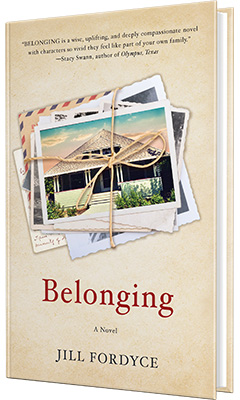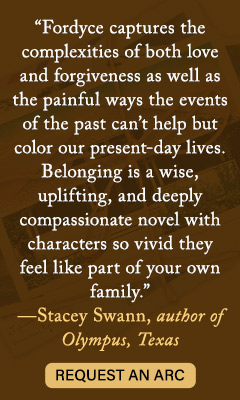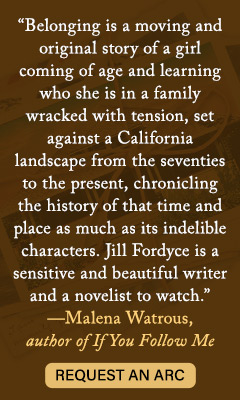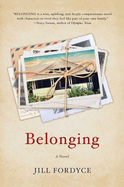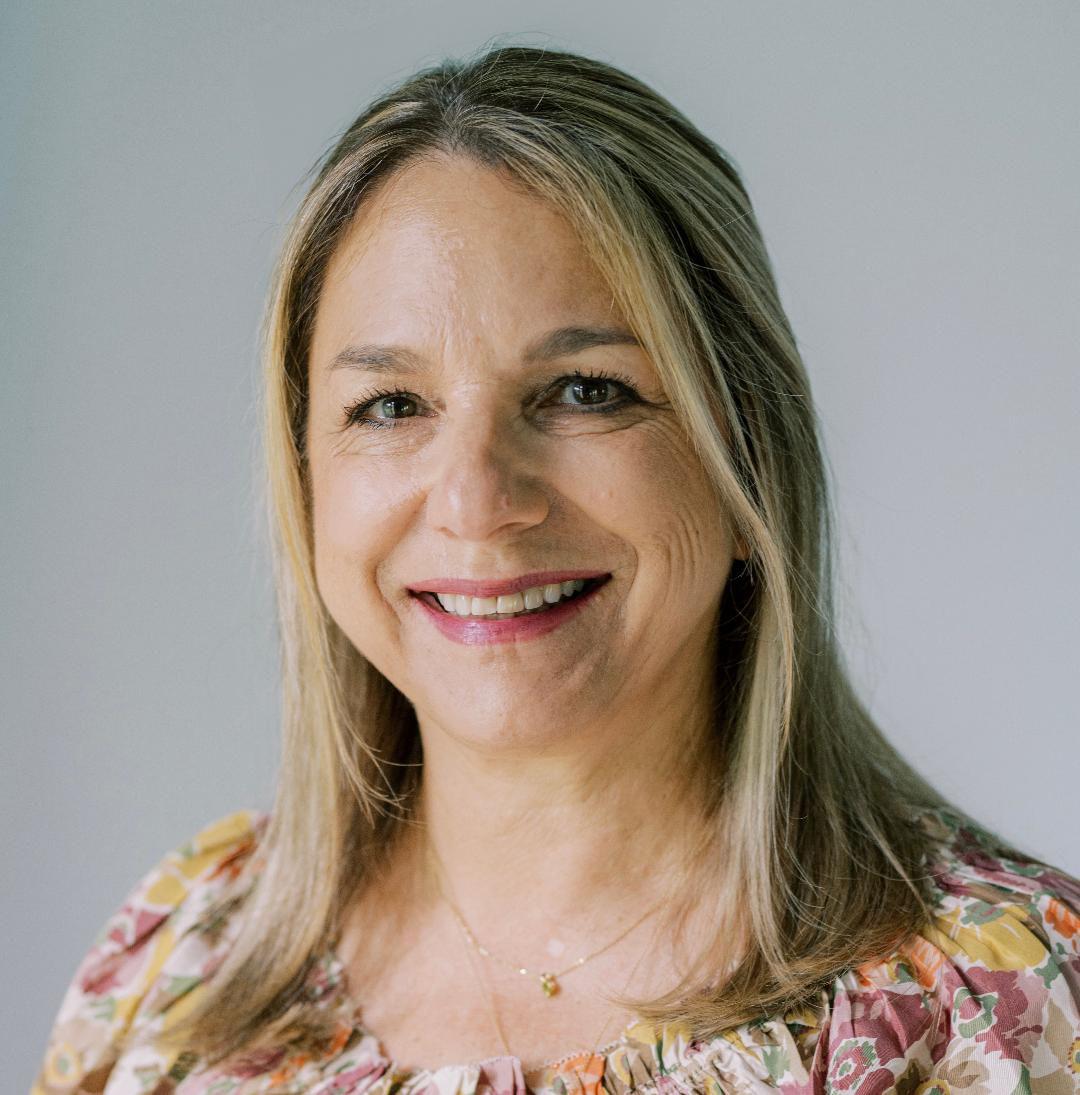Belonging
by Jill Fordyce
Belonging--the first novel by Jill Fordyce--is a tenderly drawn coming-of-age story that sympathetically traverses decades in the life of one soul-searching woman from Bakersfield, Calif., and how generational influences shape her fate.
The story begins in December 1977--a time filled with wood-paneled station wagons, the music of Merle Haggard and Carole King, and movies like The Goodbye Girl, Close Encounters of the Third Kind, and Saturday Night Fever. Jenny Hayes is 13 years old, a "shy and slow to make friends" eighth-grader fascinated by photography and smitten with Billy Ambler--"his broad shoulders, the dark curls that touched the top of his perfect ears, the way he held his camera like he knew what he was doing." Jenny's best friend is Henry, the "boldest and funniest person" she had ever known. The two bonded in kindergarten and became "unlikely but inseparable" friends. Henry's parents broke up when he and Jenny were in the fifth grade, and he is privy to Jenny's home life--the erratic, neglectful, and emotionally abusive nature of her alcoholic mother, Janice. Henry knows "the crushing level of cruelty" of which Jenny's mother is capable, and how her father--amiable, but often absent--works long hours as a produce broker to escape Janice's wrath.
Jenny's saving grace--in addition to her friendship with Henry--is her extended family on her mother's side. The Morettis, who also reside in Bakersfield, are vivacious, loving, and spiritually bolstered by their Catholic faith. The supportive presence of her widowed Nonna and Uncle Gino--Nonna's youngest brother, also widowed, who runs a local antiques shop--brings happiness and much-needed stability to Jenny's life. She often works at the store and is always intrigued when Gino and Nonna regale her with stories of the Moretti family's migration from Italy in 1902, and how they came to put down roots in California.
Shortly before Christmas, a terrible dust storm sweeps the San Joaquin Valley. Eleven days later, Jenny wakes to find itchy red welts covering her body. She has contracted valley fever, an illness caused by fungus spores stirred up in the wind that enter the lungs and develop into a pneumonia-like infection. Jenny's damaged right lung keeps her out of school for months. Throughout her long, harrowing medical ordeal, Jenny's mother and Nonna care for her daily. Janice and Nonna share a "tenuous and bitter" relationship, as Janice became pregnant with Jenny when she was only 19; she eloped, and Jenny was born six months later.
During her prolonged isolation, Jenny draws from the spiritual faith of Nonna and Uncle Gino. Catholic statues and religious icons that Jenny discovers at Uncle Gino's shop become sacred touchstones; they bring comfort on her long road to healing. And a collection of prayer cards with religious art depicting the lives of the saints takes on greater meaning when an unexpected death profoundly impacts Jenny's young, still malleable life.
When Jenny returns to school months later, she reconnects with Billy Ambler, who is now an aspiring pitcher. The two join forces, taking pictures for their photography course, and romance blooms. For the next several years of high school, Jenny and Billy's passionate young love grows--a love that, in some ways, liberates Jenny from the prickly relationship with her mother, who is clearly jealous of her daughter's happiness. At every turn, Janice passes judgment, calling Jenny "trashy" and "floozy," among other slurs. Janice also degrades Henry, describing him as a "freak." These slanders deepen the mother-daughter divide, and Jenny applies to college to escape her mother. Through it all, Jenny conceals her mother's alcoholism from Billy, who doesn't fully accept Jenny's enduring, however changing, friendship with Henry.
At the end of senior year, Jenny and Henry set off to study at USC, while Billy gets a baseball scholarship to Arizona State. Jenny and Billy make a heartfelt, romantic vow: in seven years, after they launch their adult lives, they will get married. But surprising twists and turns, choices made, challenge them and change both Henry's and their lives.
Readers dip in and out of dramatic episodes from Jenny's life. Fordyce crafts perceptive scenes that depict Jenny's maturation, illustrating how the past influences her ability to love and trust. The path she travels rarely goes according to plan. Jenny, and those who come to define her life, are tested, forced to face hard truths--even truths about themselves. Can wounds from the past ever truly heal? Is forgiveness possible? And what will it take for Jenny to carve out her own unique place in the world so she can finally experience a true sense of belonging?
Multi-layered characterizations, spiritual undertones, and emotionally evocative scenes propel this searching, inspiring story that explores themes of trust and loyalty; secrets and truth-telling; the meaning of love; and the many challenges posed in living a truly authentic life. With prodigious insight and great delicacy, Fordyce intimately explores ideas of family in its many forms--how family can both empower and damage--while also probing the battles between the head and the heart in matters of love and acceptance. --Kathleen Gerard



